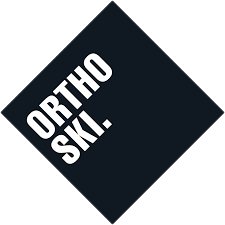Top tips for trail running shoes
Pick your shoes wisely, Daniel-san. Don’t pick ones that have had a great review in your latest guide and look sweeeeet. The best trail running shoe is the one that fits your foot and running style.
TOE SHAPE
This is a super important consideration for a trail running shoe, more so than a road race, because you will be running downhill on uneven ground. If you don’t have enough toe space or the toe box is cut too narrow, you’re going to have black toe nails, falling off toe nails and bruised toes, and in the extreme circumstance, broken toes! (Crazy, I know, but I have seen it!). Keens make a great square toe box for the Greek foot shape. Salomon have a narrow toe box that are great for the foot with long 1st toes. Hoka One One make a good rounded toe box. This is just a few of the myriad of shoe brands available, best to see your specialist store to try some on.
LENGTH
Typically a trail running shoe needs to be a bit longer than a normal jogger. Again, this is because you’ll be running downhill. You need to ensure your toes are not hitting the end of the shoe in all the types of terrain you’ll be on. Don't lose your toe nails, man!
MINIMAL vs MAXIMAL
So I don’t really like this sub-heading because it sounds like it’s one against the other and one has to win the ultimate battle for righteousness. But really, it’s what works for you. If you only run in minimalist shoes, low pitch with a soft flexible sole, and that works for you and you have trained in it in then use that. If you have only ever run in the traditional Asics Kayano and it works for you, then stick with that. Or if you like to blend the two with something like the Hoka, where they have a low heel pitch, but pretty darn cushioned, then go with that.
SHOE PITCH
Shoe pitch is the angle of the shoe from heel to toe, measured by the difference in height between heel and the toe. Minimalist is racing flats where the pitch is about 4mm (or sometimes even less), and Maximalist is more around 14mm higher at the heel than the toe. A higher heel pitch works well for heel cushioning, especially if you tend to land on your heel once you start to get a bit tired in your running.
SOLE
The grip on the tread of your shoes are suited for different conditions, depending on how grippy the rubber is and how deep the indentations are (the lugs). So you need to consider which type of terrain you run on most.
Rigid soles (that don't bend or twist) with 5mm+ deep treads are best on technical trails with poor footing. However they'll be less comfortable on road runs. Go for these if you're an off-road purist. These shoes will serve you better the more unforgiving the terrain and may work for day hiking as well.
Hybrid shoes have shorter lugs (2 to 4mm) and a softer on-road feel than their burly siblings, and are well-suited for soft single-track and local wooded trails that don’t make you slow to a walk due to unsure footing.
Okay so we've lightly touched on features you need to consider in a trail shoe, but obviously there will always be more information on your specific needs. The best thing you can do is get fitted at a specialist shoe store like Pace Athletic in Sydney, or The Running Company in Melbourne, Adelaide and Sunshine Coast.

